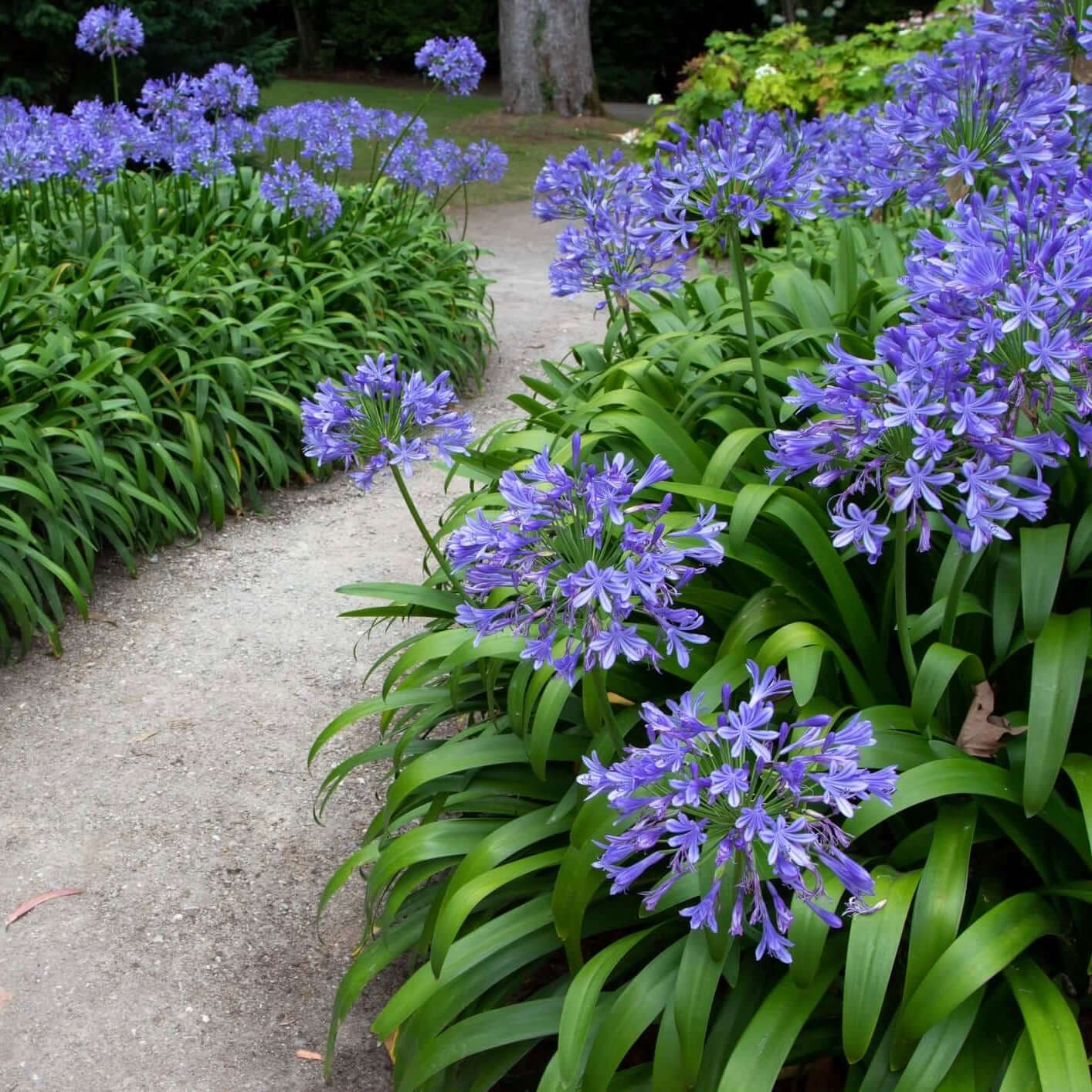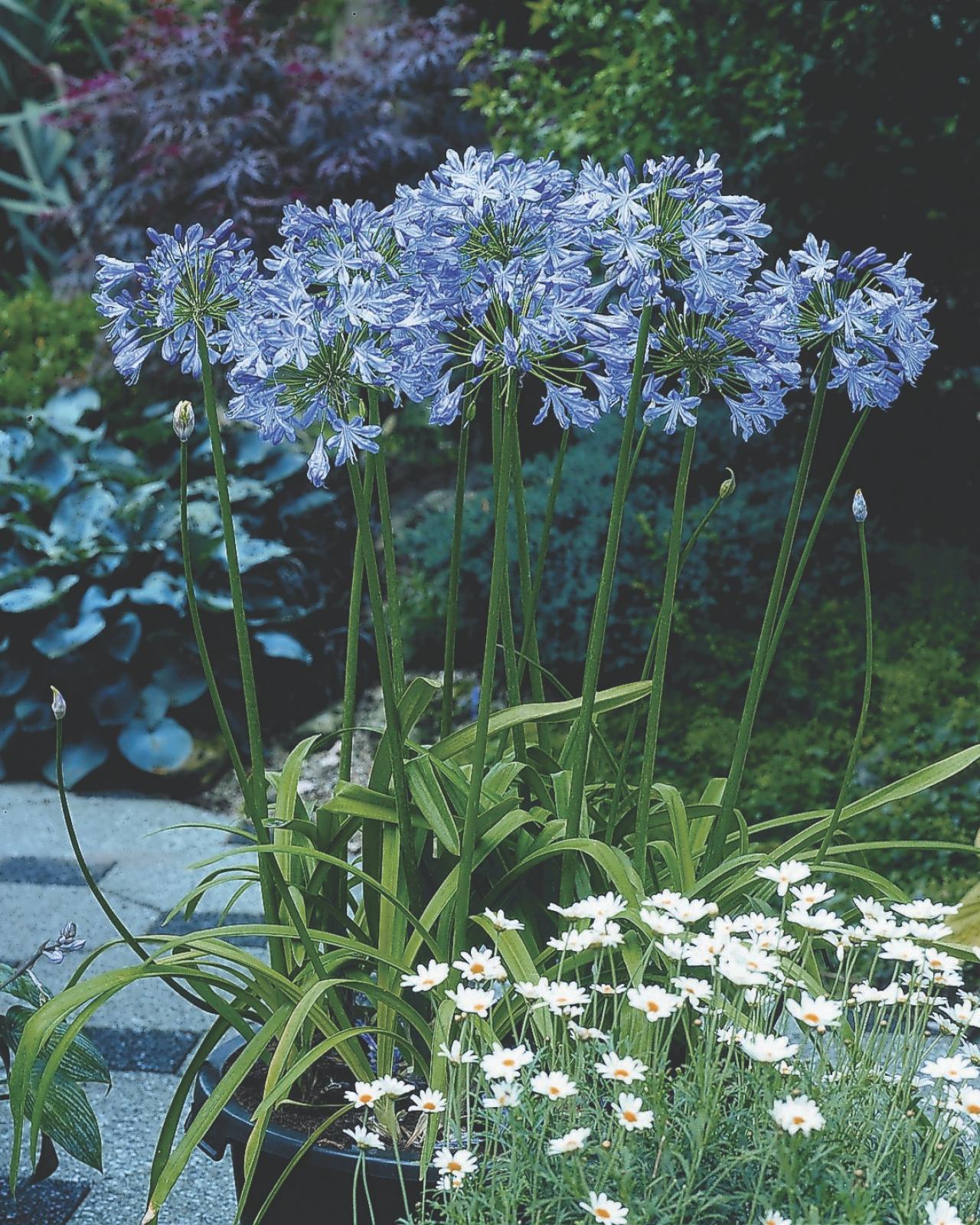Expanding Agapanthus: A Full Overview to Beautiful Blooms
Expanding Agapanthus: A Full Overview to Beautiful Blooms
Blog Article
Understanding the Art of Agapanthus Treatment: Crucial Steps for Healthy And Balanced Development and Vibrant Flowers
In the realm of gardening, the farming of agapanthus stands as a rewarding undertaking for those that look for to nurture these stylish flowering plants. With their striking blooms and graceful vegetation, agapanthus has actually recorded the focus of garden enthusiasts worldwide. Nonetheless, attaining optimal growth and vivid blooms requires a nuanced method that encompasses numerous vital actions. From picking the appropriate selection to understanding trimming methods, the journey in the direction of growing thriving agapanthus plants is complex and holds the crucial to unlocking the full potential of these herb treasures.

Picking the Right Agapanthus Variety

When choosing the ideal Agapanthus selection for your yard, consider factors such as climate suitability, bloom color, and growth practice. Agapanthus, frequently called Lily of the Nile or African lily, comes in a selection of colors ranging from shades of purple and blue to white. Select a blossom color that enhances your existing yard scheme to develop an unified landscape. Additionally, consider the climate in your region to ensure the Agapanthus variety you choose can prosper in your certain problems. Some selections are much more tolerant of cold temperatures, while others favor warmer climates. Understanding the development behavior of various Agapanthus ranges is important for proper placement within your garden. Some selections have a clumping growth habit, perfect for containers or borders, while others have an even more dispersing nature, suitable for ground cover or mass growings. By very carefully examining these elements, you can pick the best Agapanthus variety to enhance the appeal of your garden.
Ideal Planting Conditions
Taking into consideration the optimal environmental demands is necessary for successful Agapanthus cultivation. Agapanthus plants are sensitive to chilly temperatures and must be protected from frost during winter season months.
To ensure healthy and balanced development and vibrant flowers, plant Agapanthus light bulbs at a deepness of concerning 2-4 inches and room them 8-12 inches apart. Including raw material, such as garden compost, to the dirt can boost drainage and fertility, promoting robust root development. Mulching around the base of the plants assists keep wetness and subdues weed development. Normal watering is critical, especially during the growing season, to maintain the dirt continually damp however not saturated.
Watering and Feeding Tips
Maintaining proper dampness degrees and giving crucial nutrients are crucial elements in the treatment program for Agapanthus plants. It is essential to strike a balance when it comes to sprinkling Agapanthus. If overwatered, these plants favor continually damp soil yet are at risk to root rot. During the growing season, water deeply as soon as a week, making sure the dirt is well-draining to stop waterlogging. In hotter climates or during durations of drought, more constant watering may be necessary to maintain the dirt equally damp. Nevertheless, reduce watering why not try this out in the winter months to stop waterlogged problems.
Feeding Agapanthus is necessary for promoting healthy and balanced growth and respected blooms. Use a balanced plant food, such as a 10-10-10 formula, in the very early spring as brand-new growth emerges. Repeat this application every 6-8 weeks throughout the expanding season. Stay clear of excessive fertilizing, as it can result in lavish foliage at the expenditure of blooms. Constantly follow the maker's instructions for appropriate dilution and application approaches. By complying with these watering and feeding tips, you Extra resources can guarantee your Agapanthus plants grow and produce lively, long-lasting flowers.
Pruning Methods for Agapanthus
Trimming Agapanthus plants at the appropriate times and with proper methods is critical for preserving their health and promoting ideal development and blooming. The excellent time to prune Agapanthus is in late winter season or early spring before new growth emerges. Begin by eliminating any kind of yellowing or dead fallen leaves near the base of the plant. Cut them as short as feasible without harming the arising shoots.
Deadheading spent blossoms can likewise redirect the plant's energy into generating even more flowers rather than establishing seeds. If you desire to gather seeds for propagation, leave some flowers to fully grown and completely dry on the plant.
Bear in mind to utilize clean, sharp tools to make specific cuts and minimize the risk of presenting conditions. Agapanthus. Routine pruning will certainly assist keep your Agapanthus looking healthy and cool while guaranteeing a bountiful display screen of attractive flowers
Dealing With Usual Bugs and Diseases
After guaranteeing correct pruning methods for Agapanthus, it is essential to attend to usual insects and conditions that can impact the health and wellness and vigor of these plants. One common insect that impacts Agapanthus is the Agapanthus gall midge.
Additionally, Agapanthus plants can suffer from root rot if they look at these guys are planted in improperly draining soil. By being alert and taking timely activity versus conditions and pests, you can help your Agapanthus plants thrive and produce vibrant blooms. Agapanthus.

Final Thought
In final thought, grasping the art of agapanthus care involves picking the ideal range, offering optimal planting conditions, proper watering and feeding, proper pruning techniques, and addressing common parasites and conditions. By complying with these vital steps, you can make certain healthy development and dynamic blooms for your agapanthus plants. Bear in mind to consistently keep an eye on and preserve your plants to advertise their overall well-being and longevity.
To make certain healthy growth and vivid flowers, plant Agapanthus bulbs at a deepness of about 2-4 inches and room them 8-12 inches apart. By following these watering and feeding ideas, you can ensure your Agapanthus plants grow and create vibrant, lasting blossoms.
One typical pest that impacts Agapanthus is the Agapanthus gall midge. Furthermore, Agapanthus plants can suffer from origin rot if they are grown in improperly draining pipes soil. By adhering to these vital actions, you can guarantee healthy and balanced growth and vivid blooms for your agapanthus plants.
Report this page